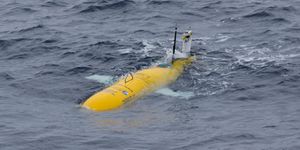How Rocket Launches Impact the Environment
Rockets are flying cargo into space more often these days than ever before, made possible in part by cost-effective reusable rockets such as SpaceX’s Falcon 9 platform. But cost and frequency aside, rockets take advantage of chemical burns to reach outer space, so has anyone ever stopped to think about what this does to the environment here on Earth?
SpaceX’s Falcon Heavy is the most massive operational rocket in existence today, and it uses a rocket fuel comprised of liquid oxygen and RP-1 (a refined type of kerosene). While SpaceX doesn’t publicize the exact specs of its fuels, a quick math calculation can determine that a single Falcon Heavy rocket emits around 1,352 tonnes of carbon dioxide per launch. Seems like a lot, right? But perhaps not…
Comparatively, a typical consumer car dumps approximately 4.6 tonnes of carbon dioxide into the environment annually. Based on this connection, we can infer that a single Falcon Heavy emits as much carbon dioxide as around 294 cars on the road per year – not that bad considering that we launch fewer than 100 rockets each year, most of which aren’t of the Falcon Heavy variety.
But carbon dioxide isn’t the only concern when it comes to rockets – so too are the black sooty particles that are left behind, as they can damage the ozone layer that protects us from harmful ultraviolet radiation and expose us to more solar radiation.
For the most part, a rocket launch’s impact on the environment is a poorly-studied topic, and additional research on the matter will be valuable as companies look to increase the number of space-centric launches for future science missions and commercial endeavors. For the most part, however, it seems that rockets have less of an impact than the combined number of cars on the road today.








